Boston-born Arthur Baker began as a DJ, but aspired to be a producer following taking an engineering course at Intermedia Studios. He wanted to make music, rather than play records.
After some early experiences, Baker became wise to the swindling ways of the music industry. He eventually released his first single ‘Kind of Life (Kind of Love)’ under the name NORTH END in 1979.
But his breakthrough as a producer came after he moved to New York in 1981. Working for urban label Tommy Boy Records, where he met engineer and keyboard player John Robie, they came up with ‘Planet Rock’.
Utilising the-then new Roland TR808 Rhythm Composer, in particular its distinctive analogue cowbell, rimshot and snare sounds, its lasting effect on the future of music came about more by chance. Baker wanted to employ a more mechanised electronic aesthetic in the vein of KRAFTWERK and YELLOW MAGIC ORCHESTRA to the output of Tommy Boy.
He saw an advert in The Village Voice: “Man with drum machine, $20 a session”… the rest is history. But the programmer of the track’s iconic 808 beat pattern remained unknown, thanks insisting on cash for his services, having declined a cheque.
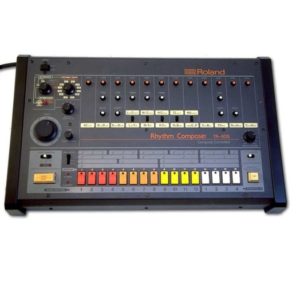
‘
Planet Rock’ featured sampling without a sampler, its ‘Trans Europe Express’ synth parts manually recreated by Robie. Although Baker did use a Fairlight CMI for the orchestra hits, he considered it “a $100,000 waste of space”.
Released in 1982, ‘Planet Rock’ put electro, as it came to be known, on the map. Never one to waste a good thing, Baker produced ‘Play at Your Own Risk’ for PLANET PATROL, taking unused recorded parts from ‘Planet Rock’. His midas touch continued with the similar sounding ‘IOU’ for FREEEZ, once again maximising the rigid character of the 808.
Always in touch with what was going on at street level, Baker often tried out his rough mixes at clubs like Paradise Garage, The Danceteria and The Fun House. Although missing out on THE BEASTIE BOYS, Baker achieved major worldwide success when he signed NEW EDITION to his Streetwise Records. The label also released Eartha Kitt’s Boystown favourite ’Where Is My Man?’ , while other artists on the roster included Colonel Abrams, Cuba Gooding and Loleatta Holloway.
In 1989 with THE BACKBEAT DISCIPLES, Baker gathered a diverse all-star cast of Al Green, Andy McCuskey, Martin Fry, Jimmy Somerville and Etienne Daho to sing on the ‘Merge’ album, a pop hybrid record tracing his love of soul, synthpop, disco, HI-NRG and Europop.
Reflecting his trailblazing reputation in dance music with an ear for a good tune, Baker was commissioned to provide remixes for a wide range of mainstream artists including Cyndi Lauper, Bruce Springsteen, Neneh Cherry and Tina Turner, as well as more middle of the road acts like FLEETWOOD MAC, HALL & OATES and WET WET WET.
Baker’s varispeeded treatment of ‘Spaceman’ by BABYLON ZOO was used in the 1995 Levi’s TV commercial ‘Planet’, but many were disappointed to be met with the dirge rock original when the track was released as a single.
Now based between London, Miami and Ibiza, Baker continues to DJ while he notably co-produced and appeared in the 2015 documentary film ‘808’ directed by Alexander Dunn about the machine which he helped turn into a cultural icon.
Featuring reminisces by Phil Collins, Jori Hulkkonen, Felix Da Housecat, Richie Hawtin, Rick Rubin and Norman Cook among many, Baker himself interviewed the late Roland founder Ikutaro Kakehashi who had deliberately purchased faulty transistors to create the machine’s distinctive sizzling sound. Continuing his interest in documentaries, Baker is currently making one about NEW ORDER.
With such a varied career, ELECTRICITYCLUB.CO.UK presents a Beginner’s Guide to Arthur Baker featuring 18 tracks that cover the breadth of his influential music portfolio.
AFRIKA BAMBAATAA & THE SOUL SONIC FORCE Planet Rock (1982)
 Recorded by Baker at Intergalactic Studios, the ‘Planet Rock’ synth leadline interpolated KRAFTWERK’s ‘Trans Europe Express’ while the Roland TR-808 drum machine mimicked ‘Numbers’; the track even included a chant of its Japanese count. But where there’s a hit, there’s a writ so when Baker later had to pay up for using elements of KRAFTWERK, he just put up the price of the record to fund the settlement. ‘Planet Rock’ eventually sold one million copies and paid for its debt.
Recorded by Baker at Intergalactic Studios, the ‘Planet Rock’ synth leadline interpolated KRAFTWERK’s ‘Trans Europe Express’ while the Roland TR-808 drum machine mimicked ‘Numbers’; the track even included a chant of its Japanese count. But where there’s a hit, there’s a writ so when Baker later had to pay up for using elements of KRAFTWERK, he just put up the price of the record to fund the settlement. ‘Planet Rock’ eventually sold one million copies and paid for its debt.
Available on the AFRIKA BAMBAATAA & THE SOUL SONIC FORCE album ‘Looking For The Perfect Beat 1980 -1985’ via Tommy Boy Records
https://www.facebook.com/ArthurBakerDJ/
PLANET PATROL Play At Your Own Risk (1982)
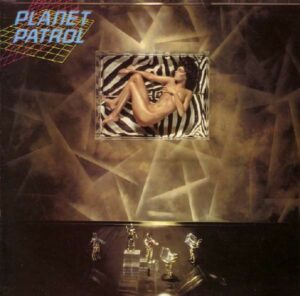 More in the vein of classic soul groups like THE TEMPTATIONS, PLANET PATROL offered an electro twist on that five way vocal template and even featured a member named Melvin Franklin! ‘Play At Your Own Risk’ was made from recorded parts that did not make the final version of ‘Planet Rock’, with Baker even saying that both came from the same multitrack. Listening back, it was also the blueprint for Baker’s ‘IOU’ which became a huge hit for FREEEZ.
More in the vein of classic soul groups like THE TEMPTATIONS, PLANET PATROL offered an electro twist on that five way vocal template and even featured a member named Melvin Franklin! ‘Play At Your Own Risk’ was made from recorded parts that did not make the final version of ‘Planet Rock’, with Baker even saying that both came from the same multitrack. Listening back, it was also the blueprint for Baker’s ‘IOU’ which became a huge hit for FREEEZ.
Available on the PLANET PATROL album ‘Planet Patrol’ via Tommy Boy Records
http://www.roland.co.uk/blog/arthur-baker/
ROCKERS REVENGE featuring DONNIE CALVIN Walking On Sunshine (1982)
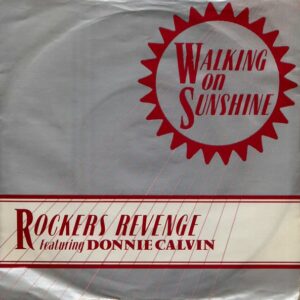 Mechanising Eddie Grant’s funky favourite in the sparkly pulsing vein of D-TRAIN, Baker’s cover of ‘Walking On Sunshine’ was specifically made for the Paradise Garage. Baker assembled ROCKERS REVENGE as a studio project with vocalists Donnie Calvin, Dwight Hawkes and Baker’s wife Tina B. While there an electronic feel, its looseness pioneered a more freestyle form that would later emerge in its own right. Continuing the covers theme, a version of Jimmy Cliff’s ‘The Harder They Come’ came out in 1983.
Mechanising Eddie Grant’s funky favourite in the sparkly pulsing vein of D-TRAIN, Baker’s cover of ‘Walking On Sunshine’ was specifically made for the Paradise Garage. Baker assembled ROCKERS REVENGE as a studio project with vocalists Donnie Calvin, Dwight Hawkes and Baker’s wife Tina B. While there an electronic feel, its looseness pioneered a more freestyle form that would later emerge in its own right. Continuing the covers theme, a version of Jimmy Cliff’s ‘The Harder They Come’ came out in 1983.
Available on the ROCKERS REVENGE album ‘Walking On Sunshine’ via Acrobat
https://www.facebook.com/RockersRevengeOfficial/
AFRIKA BAMBAATAA & THE SOUL SONIC FORCE Looking For The Perfect Beat (1983)
 With a funky urban twist over colder European electronics, ‘Looking For The Perfect Beat’ with its freestyling and mighty breakbeats took hip-hop up to the next level. With its self-prophesising title, it was far more complex and varied than ‘Planet Rock’, with nearly a year taken in the making. It showed ‘Planet Rock’ was no fluke, but Baker later remarked that the track was motivated as a taunt at Tommy Boy’s rivals and pioneers of rap, Sugar Hill Records. “Beat Dis”!
With a funky urban twist over colder European electronics, ‘Looking For The Perfect Beat’ with its freestyling and mighty breakbeats took hip-hop up to the next level. With its self-prophesising title, it was far more complex and varied than ‘Planet Rock’, with nearly a year taken in the making. It showed ‘Planet Rock’ was no fluke, but Baker later remarked that the track was motivated as a taunt at Tommy Boy’s rivals and pioneers of rap, Sugar Hill Records. “Beat Dis”!
Available on the AFRIKA BAMBAATAA & THE SOUL SONIC FORCE album ‘Looking For The Perfect Beat 1980 -1985’ via Tommy Boy Records
https://www.facebook.com/808themovie
FREEEZ IOU (1983)
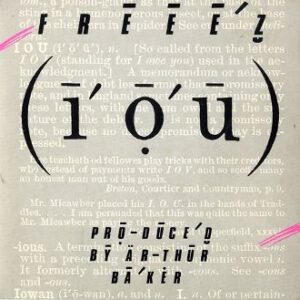 Originally a jazz funk combo, FREEEZ had fragmented to the duo of John Rocca and Peter Maas when they became fascinated by ‘Planet Rock’. Meeting Baker in New York, he suggested recording his self-penned ‘IOU’. While there was a appearance from the ubiquitous Roland TR808, an Emulator was used for the staccato voice passages but key to the song’s appeal was Rocca’s falsetto. It was co-mixed by John Jellybean Benitez, the DJ at The Funhouse who later worked with Madonna and had a solo career.
Originally a jazz funk combo, FREEEZ had fragmented to the duo of John Rocca and Peter Maas when they became fascinated by ‘Planet Rock’. Meeting Baker in New York, he suggested recording his self-penned ‘IOU’. While there was a appearance from the ubiquitous Roland TR808, an Emulator was used for the staccato voice passages but key to the song’s appeal was Rocca’s falsetto. It was co-mixed by John Jellybean Benitez, the DJ at The Funhouse who later worked with Madonna and had a solo career.
Available on the FREEEZ album ‘Gonna Get You’ via Cherry Red
https://www.discogs.com/artist/8670-Freeez
NEW EDITION Candy Girl (1983)
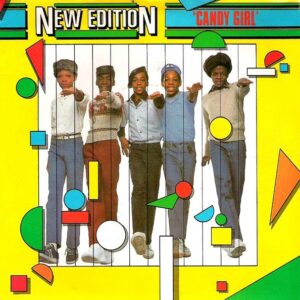 Signing what was effectively the modern electro incarnation of JACKSON 5 to his Streetwise label, Baker hit paydirt with NEW EDITION and their sweet worldwide No1 ‘Candy Girl’. With the tune’s writers Maurice Starr and Michael Jonzun working in the studio with the young quintet, Baker was executive producer and did the final mix with Starr. Unusually for a boy band, Ralph Tresvant, Bobby Brown, Ricky Bell, Michael Bivins and Ronnie DeVoe all went on to have successful careers after the group.
Signing what was effectively the modern electro incarnation of JACKSON 5 to his Streetwise label, Baker hit paydirt with NEW EDITION and their sweet worldwide No1 ‘Candy Girl’. With the tune’s writers Maurice Starr and Michael Jonzun working in the studio with the young quintet, Baker was executive producer and did the final mix with Starr. Unusually for a boy band, Ralph Tresvant, Bobby Brown, Ricky Bell, Michael Bivins and Ronnie DeVoe all went on to have successful careers after the group.
Available on the NEW EDITION album ‘Candy Girl’ via Streetwise Records
https://www.facebook.com/newedition4life/
NEW ORDER Confusion (1983)
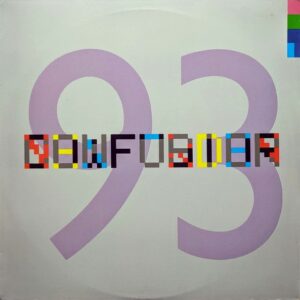 With NEW ORDER’s interest in dance music, having opened the Haçienda with New York clubs in mind, a collaborative union with Baker was inevitable. But Baker wanted to make ‘Blue Monday’ while and the Mancunians wanted to make ‘Planet Rock’, so the result was quite literally ‘Confusion’! Drummer Stephen Morris in particular had admitted frustration during the recording sessions as Baker would not let him alter his Roland TR808’s already-programmed patterns, fearing he would lose his trademark sound.
With NEW ORDER’s interest in dance music, having opened the Haçienda with New York clubs in mind, a collaborative union with Baker was inevitable. But Baker wanted to make ‘Blue Monday’ while and the Mancunians wanted to make ‘Planet Rock’, so the result was quite literally ‘Confusion’! Drummer Stephen Morris in particular had admitted frustration during the recording sessions as Baker would not let him alter his Roland TR808’s already-programmed patterns, fearing he would lose his trademark sound.
Edited version available on the NEW ORDER album ‘Singles’ via WEA
ARTHUR BAKER Breaker’s Revenge (1984)
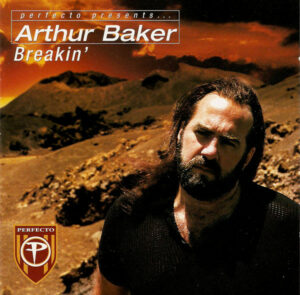 For the film ‘Beat Street’, Baker helped produce its soundtrack and contributed the frantic beat and sample laden instrumental ‘Breakers’ Revenge’ to the score. The movie itself was a based around New York’s hip hop and breakdancing scene, with part of the plot based on the graffiti documentary ‘Style Wars’. Noted figures such as GRANDMASTER MELLE MEL & THE FURIOUS FIVE, THE SYSTEM, DOUG E. FRESH and THE SOULSONIC FORCE all appeared.
For the film ‘Beat Street’, Baker helped produce its soundtrack and contributed the frantic beat and sample laden instrumental ‘Breakers’ Revenge’ to the score. The movie itself was a based around New York’s hip hop and breakdancing scene, with part of the plot based on the graffiti documentary ‘Style Wars’. Noted figures such as GRANDMASTER MELLE MEL & THE FURIOUS FIVE, THE SYSTEM, DOUG E. FRESH and THE SOULSONIC FORCE all appeared.
Available on the ARTHUR BAKER mix album ‘Breakin’ via Mushroom Records
https://twitter.com/arthurhbaker
ARTISTS UNITED AGAINST APARTHEID Sun City (1985)
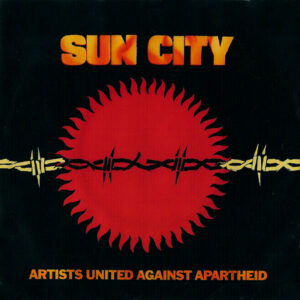 ARTISTS UNITED AGAINST APARTHEID was formed by Steven Van Zandt and Baker to protest against apartheid in South Africa, while drawing parallels with the plight of Native Americans. “A song about change not charity, freedom not famine”, ‘Sun City’ highlighted the hypocrisy of the South African government allowing entertainment there that was banned in the country, with a call to reinforce the international boycott. It featured Bruce Springsteen, Bob Dylan, Lou Reed, Miles Davis, U2 and RUN DMC.
ARTISTS UNITED AGAINST APARTHEID was formed by Steven Van Zandt and Baker to protest against apartheid in South Africa, while drawing parallels with the plight of Native Americans. “A song about change not charity, freedom not famine”, ‘Sun City’ highlighted the hypocrisy of the South African government allowing entertainment there that was banned in the country, with a call to reinforce the international boycott. It featured Bruce Springsteen, Bob Dylan, Lou Reed, Miles Davis, U2 and RUN DMC.
Originally from the ARTISTS UNITED AGAINST APARTHEID album ‘Sun City’ via Manhattan Records, currently unavailable
https://en.wikipedia.org/wiki/Artists_United_Against_Apartheid
FINE YOUNG CANNIBALS Ever Fallen In Love – Club Senseless remix (1986)
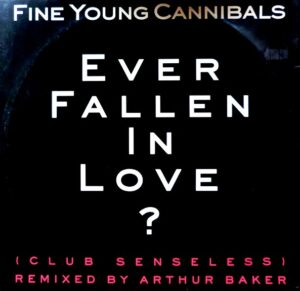 ‘Ever Fallen in Love’ was a noted song of punk and disaffection written by the late Pete Shelley and performed by his band BUZZCOCKS. But FINE YOUNG CANNIBALS caused a stir with a dance friendly version co-produced by TALKING HEADS’ Jerry Harrison for the film ‘Something Wild’. With his Club Senseless remix, Baker exploited the track’s funkier possibilities, his theory being “if you had a really groovy bassline, the drums don’t have to be a straight kick, because people dance to the bassline.”
‘Ever Fallen in Love’ was a noted song of punk and disaffection written by the late Pete Shelley and performed by his band BUZZCOCKS. But FINE YOUNG CANNIBALS caused a stir with a dance friendly version co-produced by TALKING HEADS’ Jerry Harrison for the film ‘Something Wild’. With his Club Senseless remix, Baker exploited the track’s funkier possibilities, his theory being “if you had a really groovy bassline, the drums don’t have to be a straight kick, because people dance to the bassline.”
Available on the FINE YOUNG CANNIBALS album ‘The Raw & the Cooked’ via Edsel Records
https://www.facebook.com/RolandGift.Tour/
PET SHOP BOYS In The Night – Arthur Baker remix (1986)
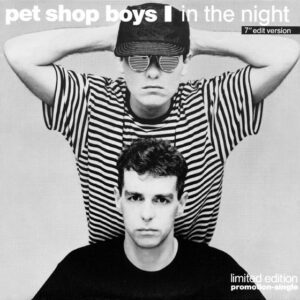 ‘In The Night’ was the B-side for the first single version of ‘Opportunities’ and saw PET SHOP BOYS reusing the same chord progression as its A-side. The lyrics referred to Les Zazous, an apolitical group in France during the Second World War who were disliked by the Nazis and the Resistance. Although Phil Harding produced, Baker did a more percussive 12 inch remix which opened the ‘Disco’ collection. This was later edited and used as the theme music for the BBC’s ‘The Clothes Show’ between 1986 and 1994.
‘In The Night’ was the B-side for the first single version of ‘Opportunities’ and saw PET SHOP BOYS reusing the same chord progression as its A-side. The lyrics referred to Les Zazous, an apolitical group in France during the Second World War who were disliked by the Nazis and the Resistance. Although Phil Harding produced, Baker did a more percussive 12 inch remix which opened the ‘Disco’ collection. This was later edited and used as the theme music for the BBC’s ‘The Clothes Show’ between 1986 and 1994.
Available on the PET SHOP BOYS album ‘Disco’ via EMI Records
NEW ORDER Touched By The Hand Of God (1987)
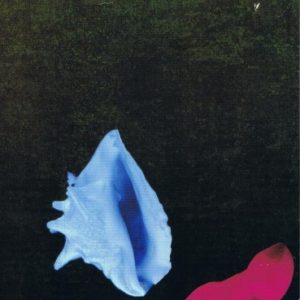 Arthur Baker developed an enduring relationship with NEW ORDER, both in the studio and as friends, having co-written ‘Confusion’ and ‘Thieves Like Us’ like he was a member of the band. Working as the music supervisor for the movie soundtrack of Beth B’s parody of televangelism ‘Salvation’, NEW ORDER contributed six tracks. The best known was ‘Touched By The Hand Of God’, its title inspired by the controversial Argentine footballer Diego Maradona and mixed by Baker for singular consumption.
Arthur Baker developed an enduring relationship with NEW ORDER, both in the studio and as friends, having co-written ‘Confusion’ and ‘Thieves Like Us’ like he was a member of the band. Working as the music supervisor for the movie soundtrack of Beth B’s parody of televangelism ‘Salvation’, NEW ORDER contributed six tracks. The best known was ‘Touched By The Hand Of God’, its title inspired by the controversial Argentine footballer Diego Maradona and mixed by Baker for singular consumption.
Available on the NEW ORDER album ‘(The Best Of)’ via London Records
https://newordertracks.wordpress.com/
WILL DOWNING A Love Supreme (1988)
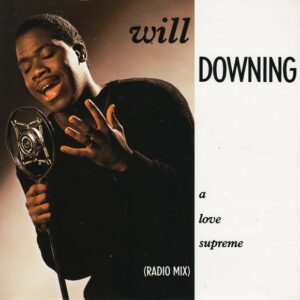 Will Downing had sung with Baker’s project WALLY JUMP JR & THE CRIMINAL ELEMENT on the single ‘Turn Me Loose’ in 1986. So when the New Yorker signed as a solo artist with 4th & Broadway, the US-based subsidiary of Island Records, Baker was a natural choice as producer. A cover of the John Coltrane jazz piece with additional lyrics by Downing, the arrangement made the most of a soulful deep house vibe that was emanating from the US at the time.
Will Downing had sung with Baker’s project WALLY JUMP JR & THE CRIMINAL ELEMENT on the single ‘Turn Me Loose’ in 1986. So when the New Yorker signed as a solo artist with 4th & Broadway, the US-based subsidiary of Island Records, Baker was a natural choice as producer. A cover of the John Coltrane jazz piece with additional lyrics by Downing, the arrangement made the most of a soulful deep house vibe that was emanating from the US at the time.
Available on the WILL DOWNING album ‘A Love Supreme – The Collection’ via Spectrum
ARTHUR BAKER & THE BACKBEAT DISCIPLES featuring MARTIN FRY Mythical Girl (1989)
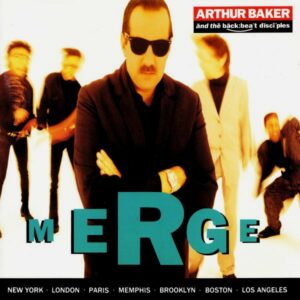 A&M Records offered Baker an album deal, but rather than facing the opportunity alone, he recruited a studio collective comprising of John Warren, Tiny Valentine, Mac Quayle, Bobby Khozouri, Philip Damien and Cevin Fisher, several of whom were to become notable in their own right. ‘Merge’ consisted mostly of dance flavoured pop; ‘Mythical Girl’ was an ABC track in all but name, involving not just Martin Fry but musical partner Mark White too, with Baker and his team producing.
A&M Records offered Baker an album deal, but rather than facing the opportunity alone, he recruited a studio collective comprising of John Warren, Tiny Valentine, Mac Quayle, Bobby Khozouri, Philip Damien and Cevin Fisher, several of whom were to become notable in their own right. ‘Merge’ consisted mostly of dance flavoured pop; ‘Mythical Girl’ was an ABC track in all but name, involving not just Martin Fry but musical partner Mark White too, with Baker and his team producing.
Available on the ARTHUR BAKER & THE BACKBEAT DISCIPLES album ‘Merge’ via A&M Records
NEW ORDER 1963 – 95 (1995)
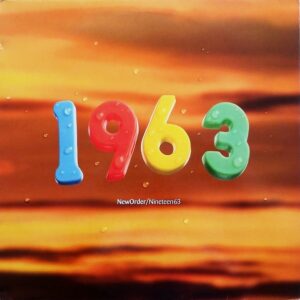 ‘1963’ came from the 1987 sessions NEW ORDER had with PET SHOP BOYS producer Stephen Hague that also spawned ‘True Faith’. However, much to the annoyance of Peter Hook, his contributions on ‘1963’ were virtually written out, only making a brief appearance at the end of the original version. Released as a belated A-side in a 1995 remix, Baker took the opportunity to make the bassist’s presence heard throughout the song in this dreamier cinematic reinterpretation.
‘1963’ came from the 1987 sessions NEW ORDER had with PET SHOP BOYS producer Stephen Hague that also spawned ‘True Faith’. However, much to the annoyance of Peter Hook, his contributions on ‘1963’ were virtually written out, only making a brief appearance at the end of the original version. Released as a belated A-side in a 1995 remix, Baker took the opportunity to make the bassist’s presence heard throughout the song in this dreamier cinematic reinterpretation.
Available on the NEW ORDER album ‘Singles’ via WEA
https://www.facebook.com/NewOrderOfficial/
TINA TURNER Whatever You Want – Massive Jungle Remix (1996)
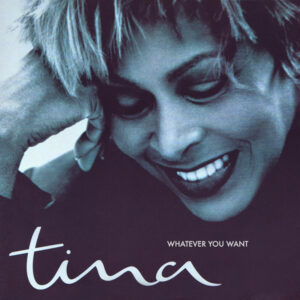 Written by Baker with Taylor Dayne and one-time studio associate Fred Zarr who had worked with Baker on several recordings, ‘Whatever You Want’ for Tina Turner was an archetypical production from Trevor Horn in its single variant. Baker’s Massive Jungle Remix though did exactly what it said on the tin, but crucially kept Turner’s mighty vocal while also retaining the key cinematic essence that had made the song appealing within its mainstream context.
Written by Baker with Taylor Dayne and one-time studio associate Fred Zarr who had worked with Baker on several recordings, ‘Whatever You Want’ for Tina Turner was an archetypical production from Trevor Horn in its single variant. Baker’s Massive Jungle Remix though did exactly what it said on the tin, but crucially kept Turner’s mighty vocal while also retaining the key cinematic essence that had made the song appealing within its mainstream context.
Originally from the TINA TURNER 12″ single ‘Whatever You Want (The Arthur Baker Mixes)’ via Parlophone Records, currently unavailable
http://www.tinaturnerofficial.com/
NEW ORDER Behind Closed Doors (2001)
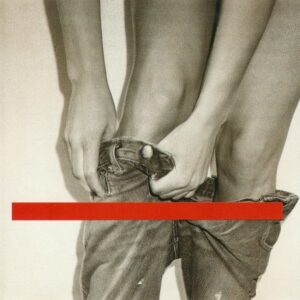 “I listen to The Coors behind closed doors” suggested Bernard Sumner ominously on this 21st Century NEW ORDER B-side produced by Baker. With its dark cinematics, the introspective tone of ‘Behind Closed Doors’ was very different to the more rocky tension of the ‘Get Ready’ comeback album. Sumner’s observations on domestic violence, lack of parental responsibility and chemical dependency coupled with mournful bass from Hooky made for sinister listening.
“I listen to The Coors behind closed doors” suggested Bernard Sumner ominously on this 21st Century NEW ORDER B-side produced by Baker. With its dark cinematics, the introspective tone of ‘Behind Closed Doors’ was very different to the more rocky tension of the ‘Get Ready’ comeback album. Sumner’s observations on domestic violence, lack of parental responsibility and chemical dependency coupled with mournful bass from Hooky made for sinister listening.
Available on the NEW ORDER single ‘Crystal’ via WEA
HURTS Wonderful Life – Arthur Baker remix (2010)
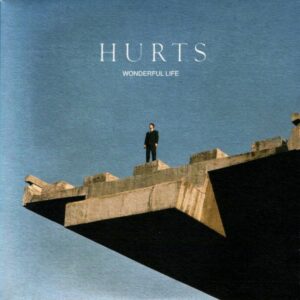 ‘Wonderful Life’ had an epic cinematic backdrop with noirish synths and brooding woodwinds that saw singer Theo Hutchcraft telling the story of a suicidal man saved by love at first sight. The sub-six minute Arthur Baker remix took away the big compressed drums and replaced them with the tight electro snap of an 808. Adding a squelchy bassline sequence reminiscent of a 303, Baker kept the song intact and satisfied those who felt HURTS were nothing more than TAKE THAT dressed like ULTRAVOX.
‘Wonderful Life’ had an epic cinematic backdrop with noirish synths and brooding woodwinds that saw singer Theo Hutchcraft telling the story of a suicidal man saved by love at first sight. The sub-six minute Arthur Baker remix took away the big compressed drums and replaced them with the tight electro snap of an 808. Adding a squelchy bassline sequence reminiscent of a 303, Baker kept the song intact and satisfied those who felt HURTS were nothing more than TAKE THAT dressed like ULTRAVOX.
Available on the HURTS single ‘Wonderful Life’ via RCA Records
https://www.informationhurts.com/home/
Text by Chi Ming Lai
14th September 2019

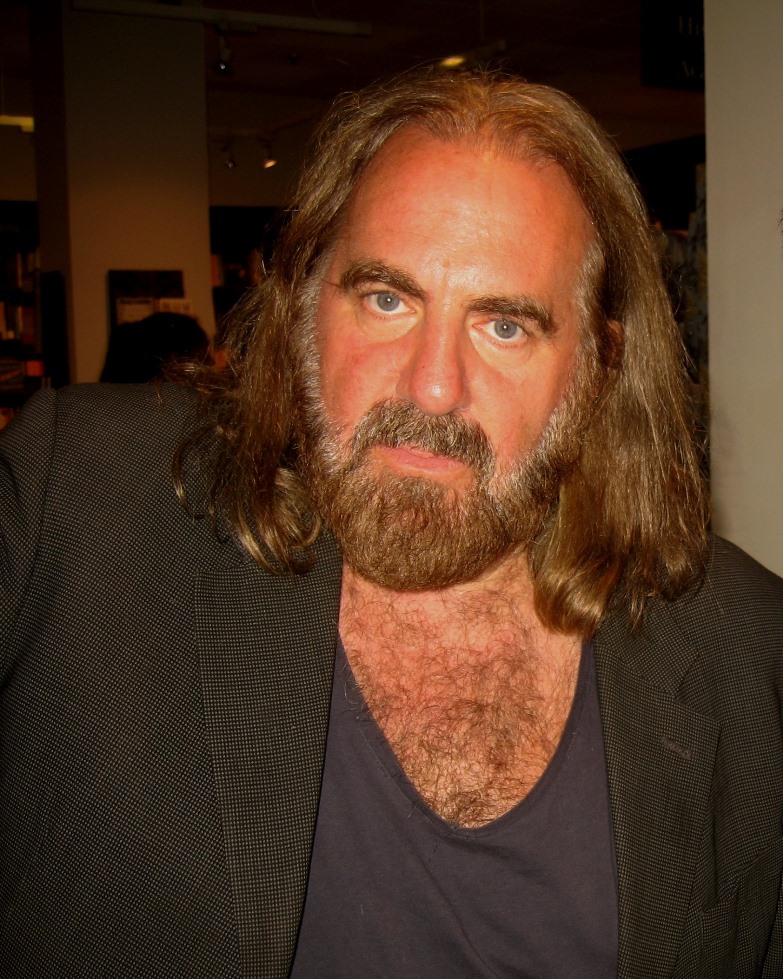
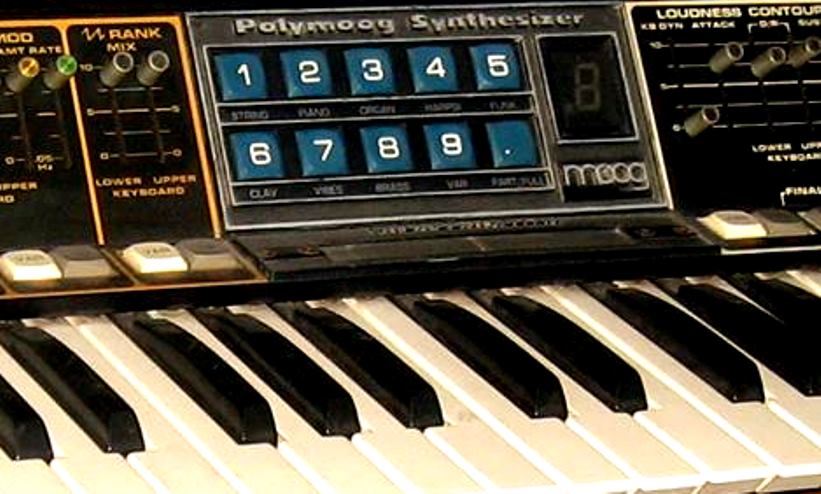

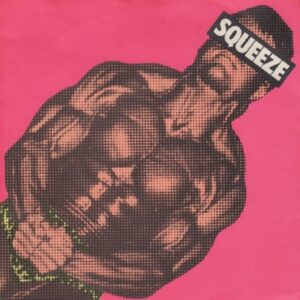


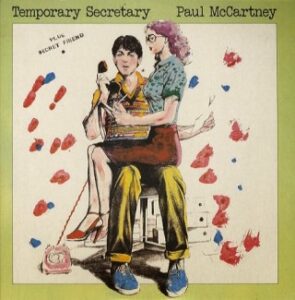

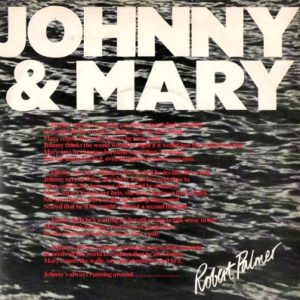
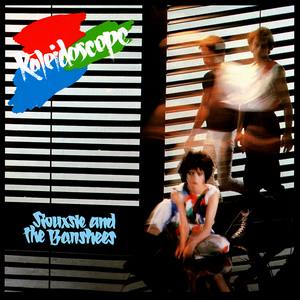
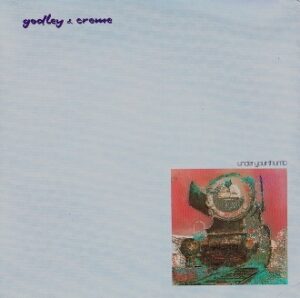
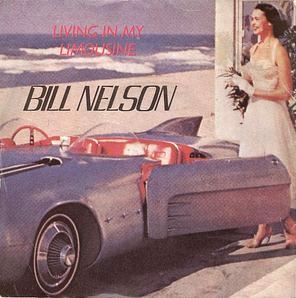
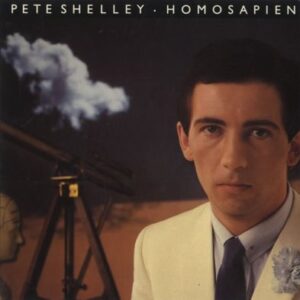
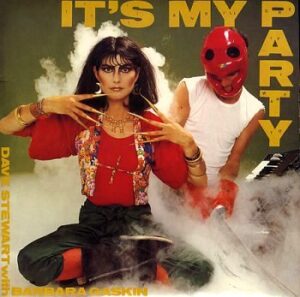
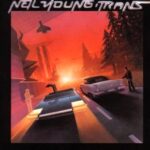
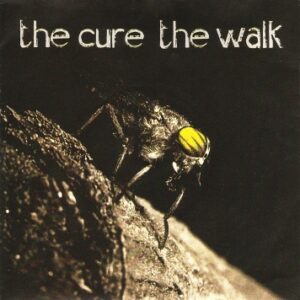


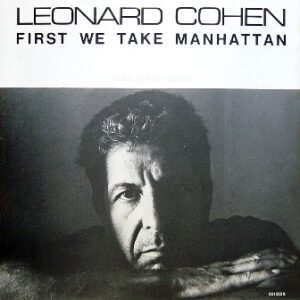
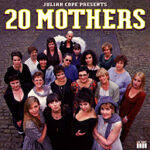

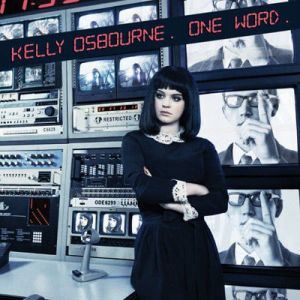
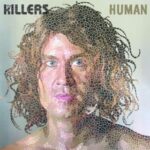
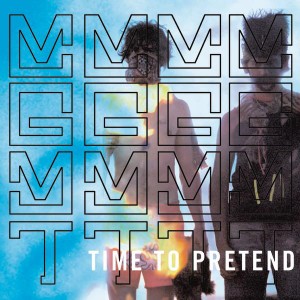

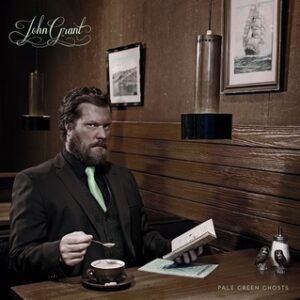
Follow Us!